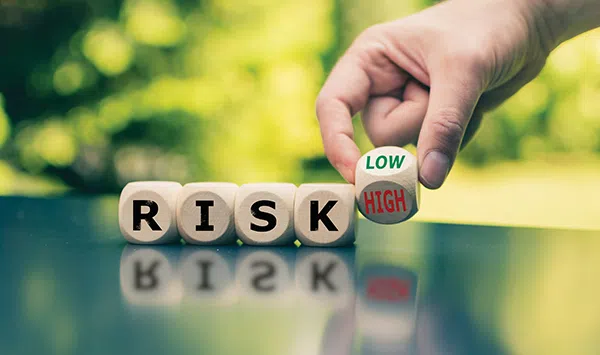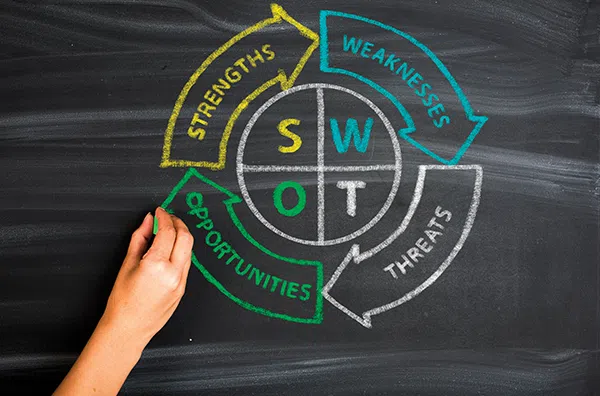Business owners must address succession planning before it’s too late. Grooming leaders and ensuring all assets are valued properly will help when it’s time to retire.
I can’t tell you how many times I’ve heard business owners say they can’t get the value out of their business during the “sale” process. In the same breath I also hear how involved they are in their business and that their business needs them to survive.
I’ve spoken to a number of business brokers about the motivation behind people selling their business. In many cases, the reason revolves around poor health or the owner is simply burnt out. If you haven’t developed a succession plan, you’ve got some real challenges facing you – especially if you want to exit the business sooner than later. Additionally, you probably have increased the odds of your business failing if something were to happen to you.
Indeed, you need five to 10 years to develop and implement a sound succession plan. Not developing a succession plan can put your business, your family and your employees at risk. It also guarantees that you will be working at least another five years while implementing ownership transition.
Succession planning should start the day you become a business owner. This plan and transition is one of the most complex management tasks an owner faces. This article will touch the surface of this subject and with some luck get you thinking, moving and acting in the right direction.
In his book “Good to Great,” author Jim Collins emphasizes the value of leadership in an organization — specifically, the value of developing leadership within the ranks of the organization. The owner should be working with his employees to develop a team of candidates that could operate the business in his or her absence. As they mature, one or more could display the ability to lead the organization. If you are not nurturing employees for leadership positions, then all you have done is given yourself a job with all the responsibilities and stress without turning your business into an investment. Do you want to bet the ranch that you will be healthy enough to own and run your business well into retirement years?
Succession planning involves a number of aspects, the most important being continuity of leadership. With proven leadership, you (the owner) can turn your full-time day job of operating the business into more of an “overview” of an investment that provides you with depth of management, other perspectives on business operations and increased value due to the proven leadership. I’m aware this may sound simplistic. However, I’m making a few assumptions. Specifically, I am assuming that you have been following some, if not all, of the management practices outlined in the pages of HVACR Business.
From my experience in the hvacr industry, you need about 10 years to find, develop and nurture a great leader. Why so long? Not everyone can handle the multi-tasking, stress and responsibility of running a company. It is a 24/7 operation that demands constant watching and decision making.
Succession planning necessitates targeting the next owner. Will the buyer be an employee, a group of employees, a competitor, a consolidator, manufacturer or energy company? These possible buyers are motivated by different reasons and will be looking for specific characteristics that would set your company apart from the competition. Later in this article I’ll reference valuing your business utilizing “text book” methods, but you also must incorporate the value placed on your competitive edge. In other words, what strategy do you utilize that sets your business apart, makes it unique, makes it stand out from the rest?
Another important aspect is the value of the business and whether you can retire on the sale price. As stated earlier, if the business needs you there everyday, you don’t have a business to sell — don’t expect great value from the sale. On the other hand, if you have nurtured leadership over the years and you don’t need to be there for the organization to operate profitably, you have something of value. Talk to a business broker or possibly your banker about business valuation, I’m sure it will be an eye opener. Talk to your CPA or financial planner about the money you need for retirement to see if the business value fills this financial need. If you are the “rainmaker” (the one who brings in the sales and money), I’m confident that the business value will fall far short of your retirement needs. Once again, nurturing proven and seasoned leadership in your company dramatically increases the value of your business.
A major challenge of succession planning is funding the sale. In many cases the buyer doesn’t have the net worth necessary for the purchase, which leaves you to fund the deal and place the bulk of your retirement funds at the mercy of the new owner(s), market conditions, and changes in taxes.
An option is using SBA funding. The U.S. Small Business Administration (SBA) will work with your bank to guarantee a portion of the loan to your buyer. By using the SBA program you can usually sell the business and receive a substantial portion (if not all) of the sale price at settlement. But be prepared for the avalanche of paperwork associated with an SBA loan.
Once you’ve started your succession planning and reviewed your retirement needs, the next step is to start positioning the business as a viable asset. The most common methods of valuing a business:
Book Value, which is reflected in your firm’s financial statements. In general terms, book value is the total value of a company’s assets once depreciation and liabilities are removed. If you liquidated the company by selling off the assets and paying the liabilities, the remaining value is book value.
Adjusted Book Value, which reflects the current “market” value of your company’s assets. (This method is more significant for a company with newly acquired assets or assets that don’t depreciate.)
For example, you may own equipment that has been fully depreciated but due to its unique nature still has substantial value. It could refer to special distribution agreements that allow you to purchase inventory far below market price. Your inventory value would reflect what you paid for the materials but due to your deep discount, the inventory could be worth substantially more.
Standard Valuation Methods, which are used by national and regional acquisition companies for valuing firms they’ve targeted for takeover.
Standard valuation methods incorporate the “cash generating” capability of a business typically based on the last three years of income tax and qualifying the non-recurring add backs (the expenses a business would not have if you were no longer the owner) to present a clearer picture of the cash-generating ability of the organization. Once this is established, the cost of money is factored in to develop a threshold of debt the company can support. The debt value is usually a starting point for the sale price. Other factors such as goodwill, business longevity and internal leadership will influence the final value.
Capitalization of Earnings Methods, which are used by the IRS and the courts in valuing business interests for estate and gift tax purposes. These methods attempt to quantify the goodwill of a company in terms of its earning power, beyond the value of its operational assets alone.
From my experience, the non-recurring add backs are a focal point. The lending and valuing institutions will focus on the excess cash your business generates as the revenue stream to fund the buyout. The larger the non-recurring add backs, the higher the price. I worked with many of my friends at the Air Conditioning Contractors of America to find these add backs. Some well known non-recurring add backs:
- A portion of the owner’s salary. If you have a management team in place and you are not operating the business, you could deduct almost all of your salary. If you devote 50% of your time to work per week, you would deduct less of your salary.
- Owner-related expenses. This includes health care, retirement-account payments and entertainment expenses.
- Excess rents paid to the landlord, assuming the landlord is also the owner of the business.
- Unproductive family members on the payroll. The seller should provide a clean payroll and employment chart for the buyer.
- Extravagant toys such as a boat, airplane or sports cars. All the toys will come off the financials leaving the business assets and equipment reflecting the actual needs of the business.
When you add up all expenses that may not truly reflect the cost of your business, you soon realize the cash-generating ability of a business. In my case, I was surprised at the final value.
Now, I must temper this thought with the need of having a good organization that functions in your absence. Otherwise, you can’t deduct your salary since the company would need to find a new “you” to work in the company.
For example, let’s assume your company has annual sales of $2 million and you have developed a great leadership team that runs the company in your absence with no drop in profits, no employee turnover, and no loss of customers. You can take your total compensation, car expense, travel expense and other expenses related to your “cost to the company” and use this value as funding for paying the loan the buyer obtains. So, in this example, let’s assume the following:
| Annual Sales...................................... |
$2,000,000.00
|
Owner’s salary
Owner’s share of profits (annually)
Owner’s expenses (car, medical, etc.)
Total Owner’s compensation................... |
$200,000.00
$50,000.00
$50,000.00
$300,000.00
|
| Multiplier*................................................................. |
4
|
| Add Back Value.................................... |
$1,200,000.00
|
*Multiplier – A value placed on the business based on your business strategy, marketing plan, financial history, and employee talent just to name a few. The multiplier value can decrease or increase based on the business valuator’s review of your operation and the level of desire of the purchaser.
Please remember, this example reflects an owner that doesn’t need to be present for the business to operate. If you take a portion of the owner’s salary from the non-recurring add backs, see how the value drops. This is why I’ve emphasized the need for talented leadership development within your organization.
You must also remember that most hvacr businesses involve service, which is more difficult to quantify. The service industry places a premium value on your employees due to the need for technical expertise. What is your company employee turnover rate? How stable is your management? What competitive advantage does your company have over your competitor? These are just a few questions you need to be asking yourself when you plan your succession program. How do manufacturers, competitors, energy companies and other trade groups view your professionalism, expertise, and reputation? Better yet, what do the licensing agencies in your governing area think of you and your business reputation?
This article is only skimming the surface of a very important subject. There are several other items that must be addressed, including who holds your technical licensing in the business? Is your sale an asset or stock sale? Should you sell to your children or non-family members? Should you merge with a competitor? The time to start succession planning is now. I doubt many reading this article will want to be working when they are 65 or 70. In fact, many owners want to sell the business when they are in their 50s. Planning your exit strategy is just as important as the initial planning when you started in business. In fact, even more so since you can’t afford to make a mistake. Time will not allow a “do over” at this stage of your life. Do yourself a favor, seek out professionals to help you set up a succession plan and start your planning now.
Skip Snyder is president of Snyder Company Inc., was the 2004 chairman of ACCA, and was chairman of NATE from 2000 to 2003.



